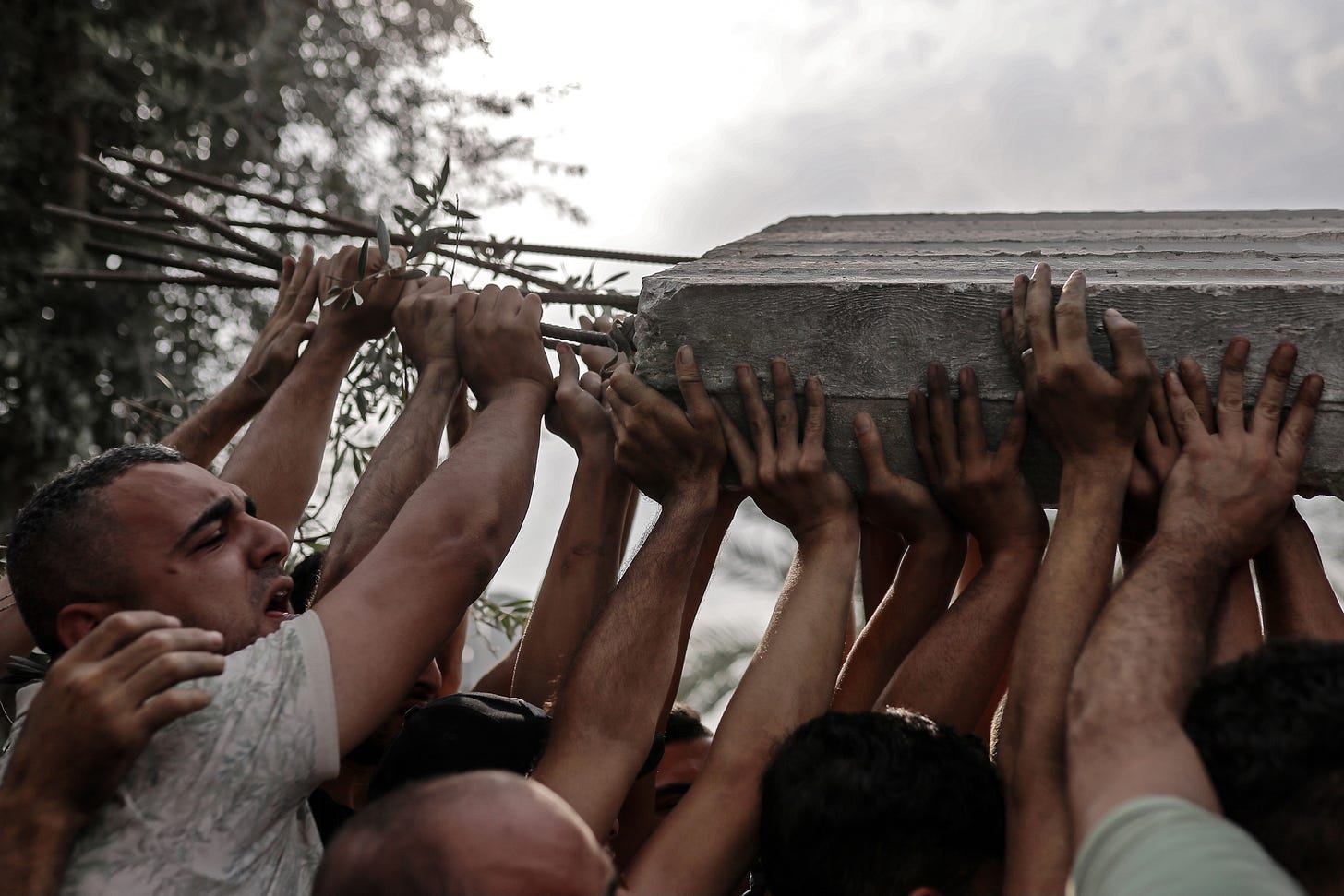
This project began in a tent set up outside the morgue at Nasser Hospital, where I was staying after my home was destroyed during the war. The tent overlooked an area where bodies were being gathered after the morgue had reached full capacity.
It was there, surrounded by the smell of death and the constant sound of drones overhead, that I began documenting hands. I wore a mask at all times because the scent of death was everywhere. I worked daily from a space no larger than two meters—barely enough to sleep in—but it became the base for a documentary project about life in its most fragile form.
Over the course of more than 185 consecutive days of coverage, my lens focused on hands: hands fighting to survive, a father's last touch with his son, hands digging through rubble in search of survivors, and hands wounded for telling the truth.
I captured this photograph in a moment I will never forget. I was inside the morgue taking pictures when the place outside grew crowded with the families of the martyrs who had come to identify their loved ones. The door was shut without anyone realizing I was still inside. I was trapped there for a minute and a half—the longest of my life—alive among the lifeless.
In front of me was a small hand hanging out from a shroud, belonging to a boy who looked about fourteen, lying as if he were merely asleep. I never saw his face, so I began to imagine his features, his appearance, the color of his hair, and I felt as though I knew him. I saw in him my brother's face and the faces of the neighborhood children I grew up with. I stared at his fingers and thought: what if he were still alive?
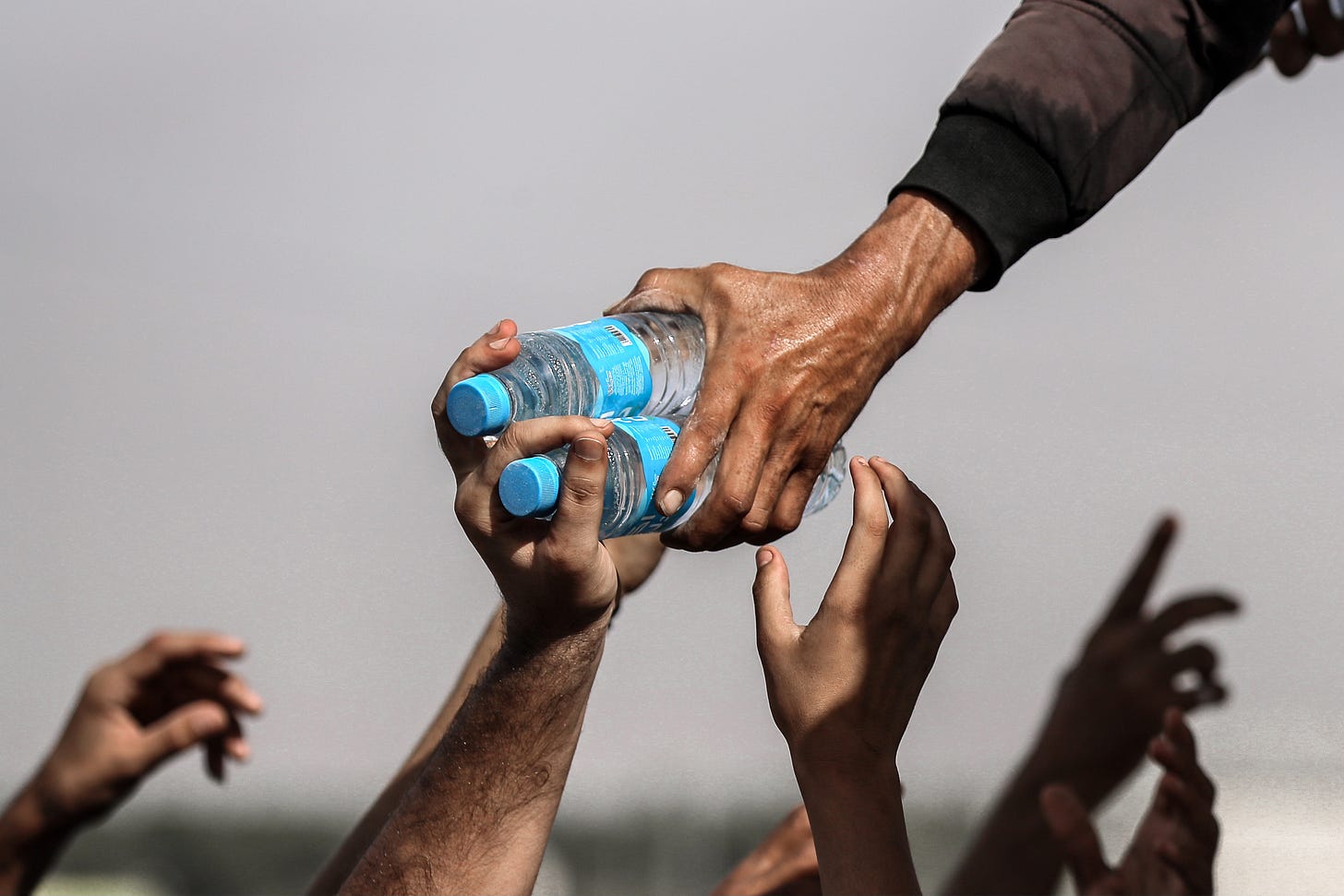
On the morning of December 28, 2023, Abdullah Al-Ghaf set out to buy biscuits for his little boy, Firas, who had begged him for them all through the night. He wanted to bring a small joy to his son. But while Abdullah was outside, a massive explosion shook the neighborhood. He rushed back home to find that an Israeli tank shell had struck his house in Khan Younis, killing both his wife and his beloved child, Firas.
Moments before I took this photograph, as I was speaking with him, Abdullah opened the shroud of his son and gently placed the biscuits inside. With trembling hands, he whispered, "I brought you the biscuits you asked for. Take them with you to heaven."
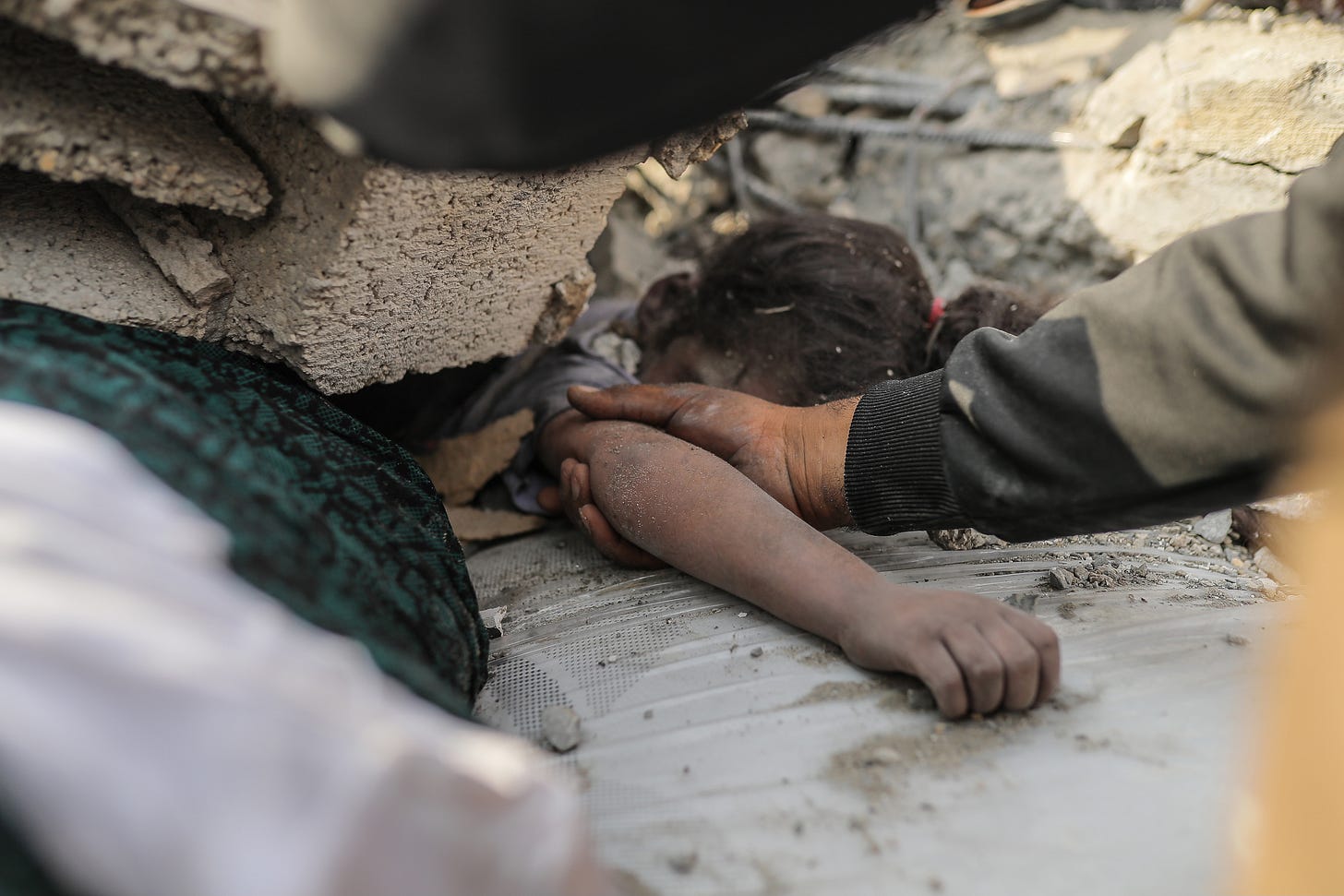
At the funeral of my colleague, photojournalist Samer Abu Daqa, I captured an image of Wael al-Dahdouh, his wounded hand visible as if it carried the weight of the strike itself. Wael had been injured by a missile from an Israeli reconnaissance drone that targeted him and Samer while they were reporting in the center of Khan Younis, even though both wore press vests clearly marked.
For me, Samer was not just a fellow journalist but a close friend. We shared meals and slept in a small tent inside Nasser Hospital, and just hours before his death, I sat with him, haunted by an unshakable feeling that something terrible was about to happen. Two hours later, that premonition came true.
Wael arrived at the hospital with a severely injured hand, an injury that still leaves him impaired, yet what struck me most was that the very hand that bled did not stop him. The next day, he appeared back on air, and in the photograph from the funeral, his injured hand became more than a wound; it became a symbol of resilience.

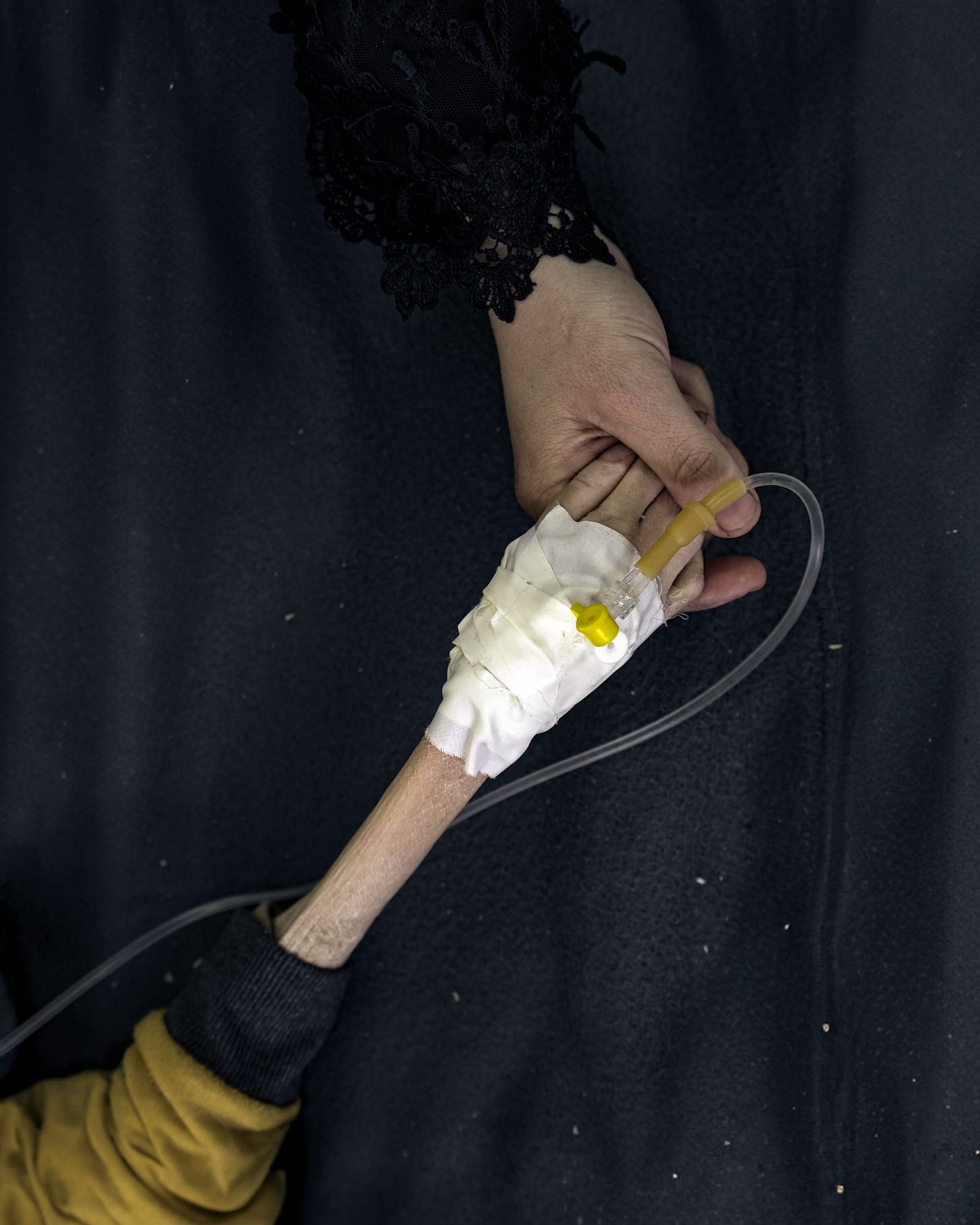

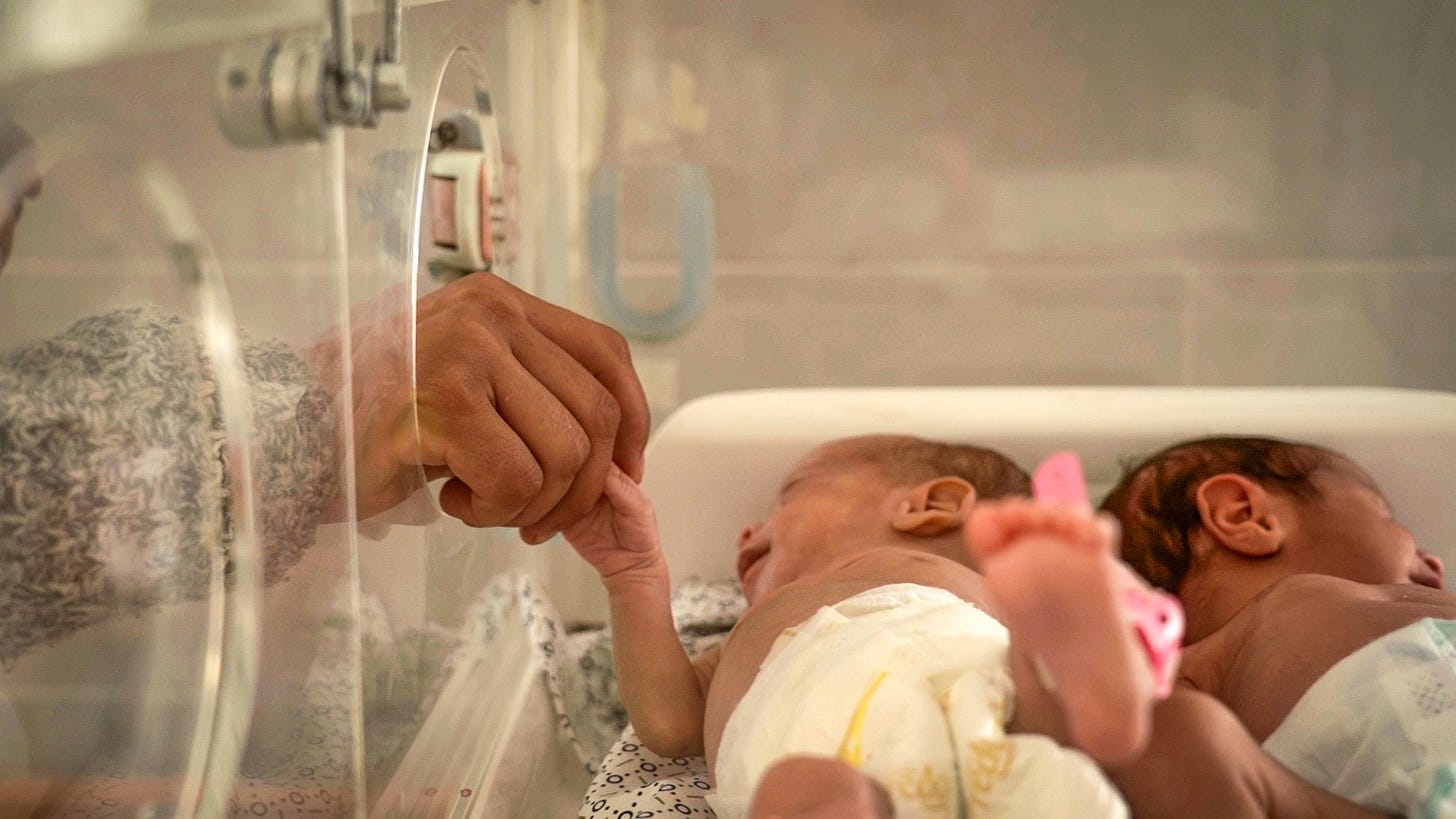

I began photographing this project while covering the war from October 2023 to April 2024. After leaving Gaza, I started editing and building it into its current form. I focused on hands because they carry the identity of their owners and tell stories in a way faces sometimes cannot. Through the images, you can recognize who people are simply by their hands, and I wanted to leave room for viewers to put themselves in the place of the person photographed or imagine what their face might look like.
During the war, I was injured in my own hand, and my greatest fear was that I might lose its function. My hands are everything to me. I photograph, draw, and shake hands with them. Imagine not being able to do any of that. With these images, I try to let each hand speak what words cannot and leave a mark that allows everyone who sees them to feel their humanity.
Belal Khaled is a Palestinian artist and war photographer who uses art and photography to shed light on human suffering in the face of wars, conflicts, and disasters. His project “Hands Tell Stories” has been shortlisted for the 2025 Prix Pictet Storm
Belal grew up in refugee camps in Gaza, where his creative vision was shaped by the depth of the Palestinian cause and the experience of displacement. This led him to dedicate his work to documenting the struggles of refugees around the world and amplifying the voices of the marginalized through his images and art. He has covered numerous wars and conflicts, from the war in Gaza and Syria to Azerbaijan, as well as humanitarian crises such as the Syrian refugee crisis and the Turkey earthquake.
Belal’s work has been exhibited in over 15 countries, including Belgium, Sudan, Somalia, Zimbabwe, Egypt, Lebanon, Turkey, Qatar, Malaysia, Tunisia, and Saudi Arabia. Each piece carries a humanitarian message that transcends borders. His work has been displayed in prestigious exhibitions and venues, including UNESCO’s World Arabic Language Day exhibition and Google’s headquarters in Paris.
In addition to his exhibitions and journalistic work, Belal appeared as a speaker on TED Arabic, where he shared his vision of how art can drive change. His work has been published in major global newspapers and magazines, including Time, The Guardian, The Wall Street Journal, and Al Jazeera, further establishing his presence as an artist who uses his art and photography to serve humanitarian causes.

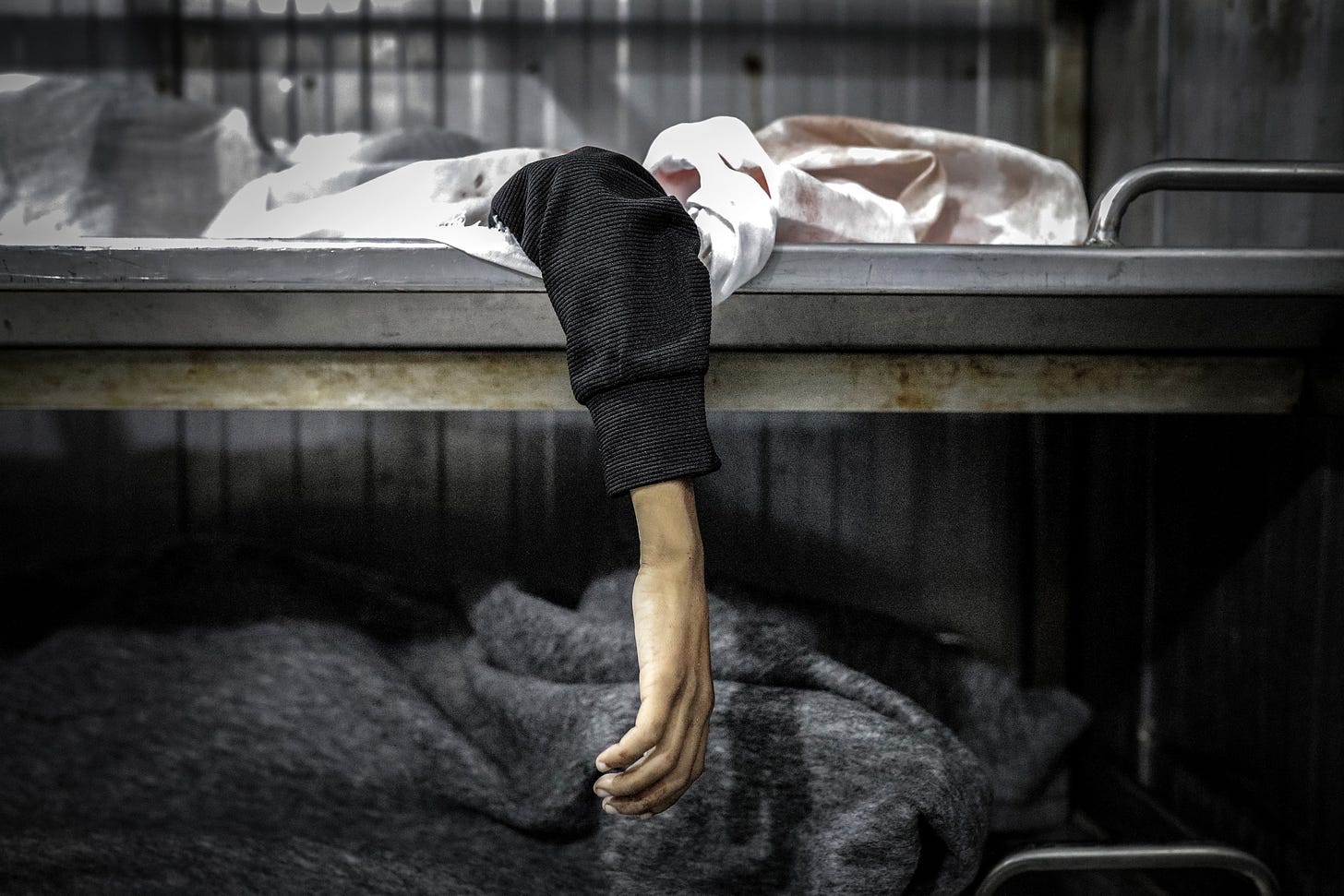
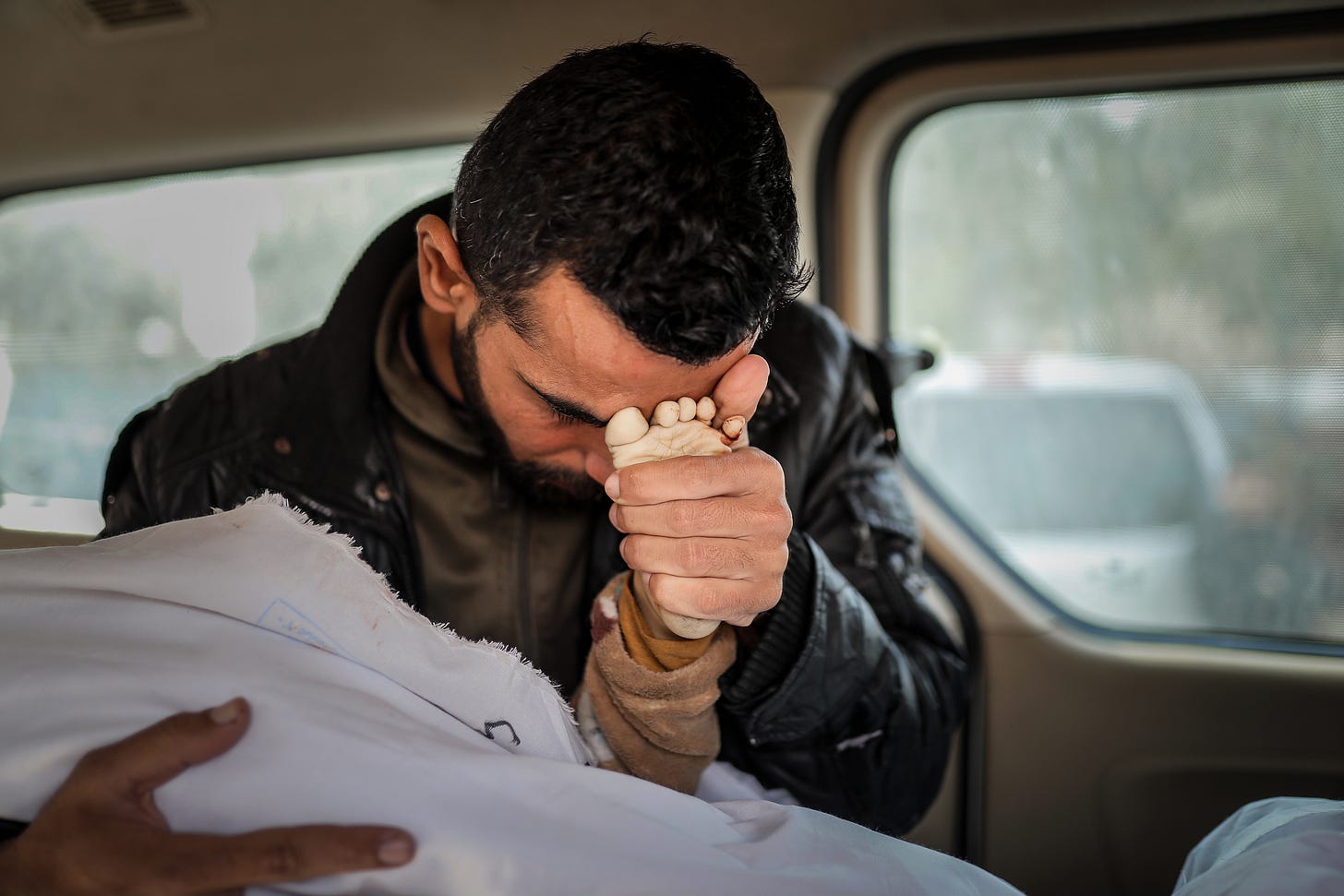
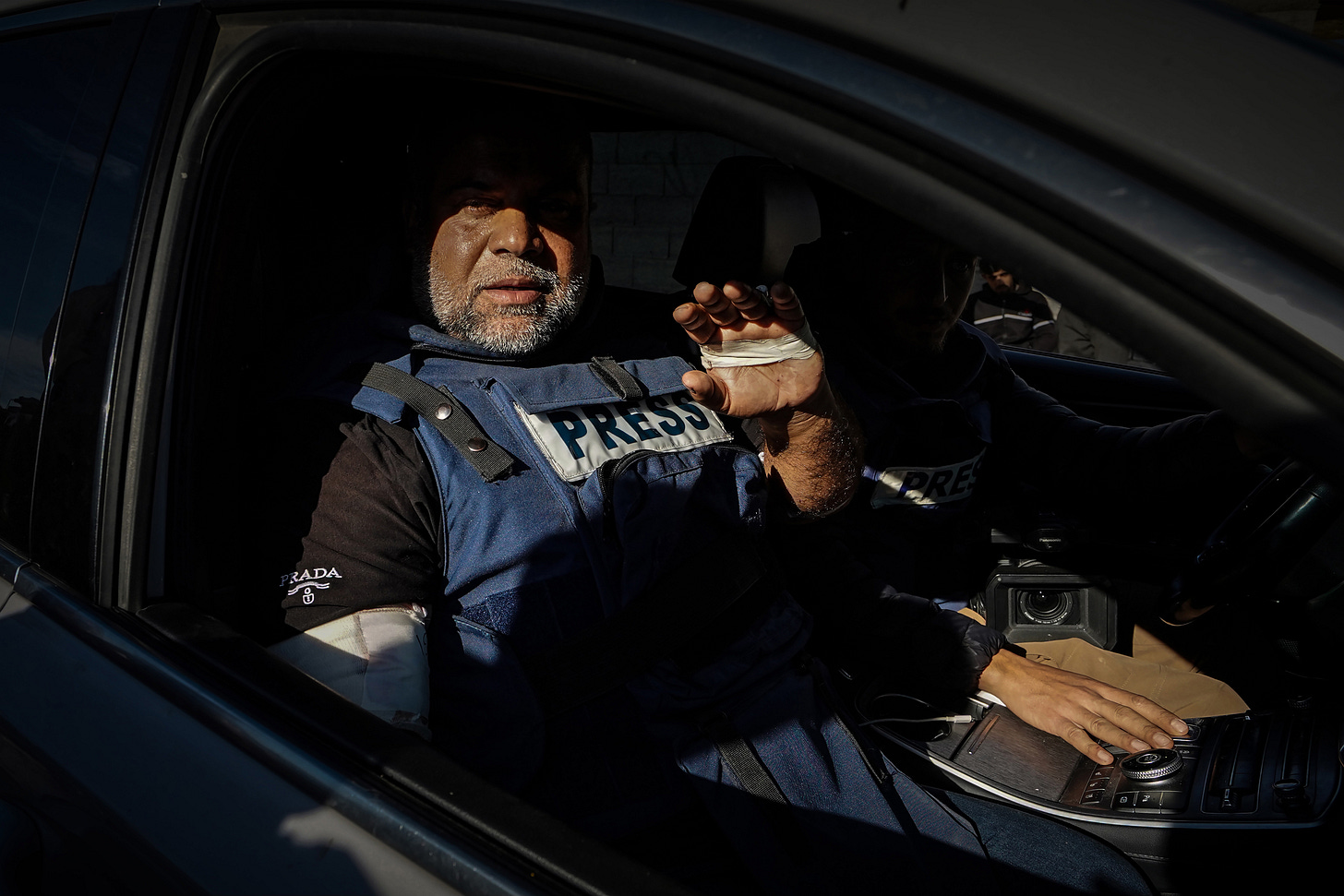
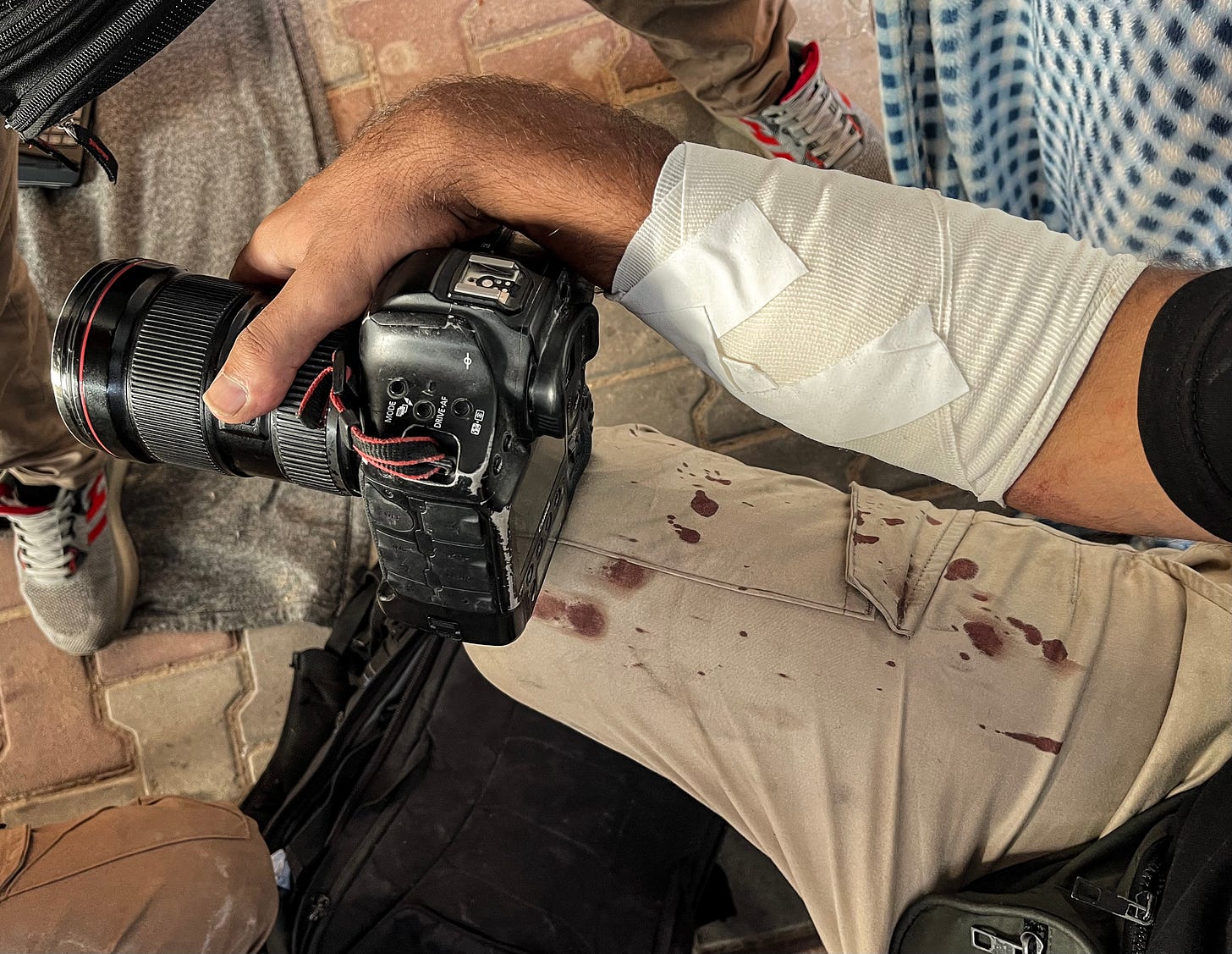
This story is hauntingly moving and heartbreaking. Belal forces the viewer of these photographs to feel, to try and comprehend such a devastation. Thank you for sharing.